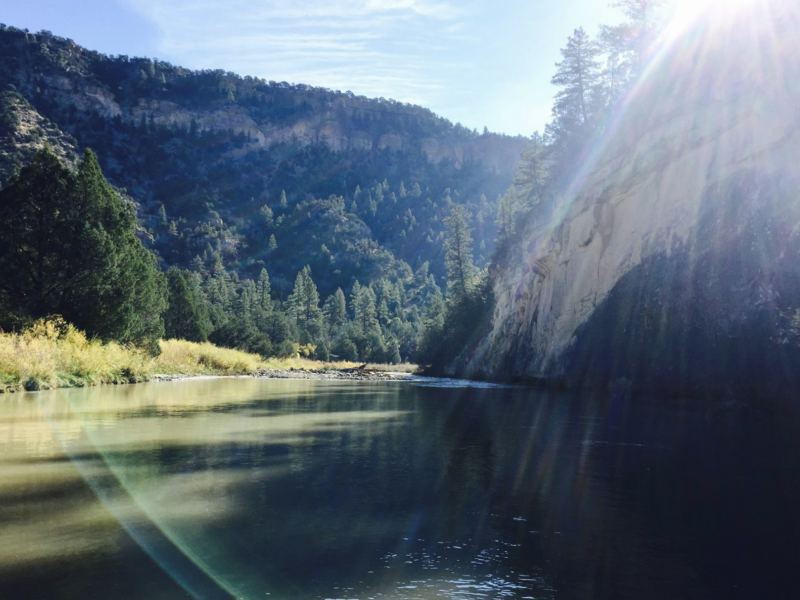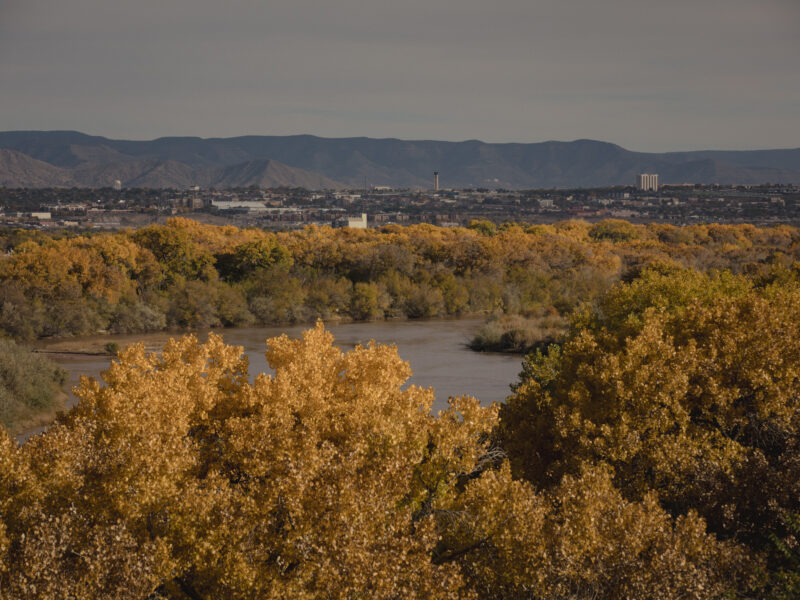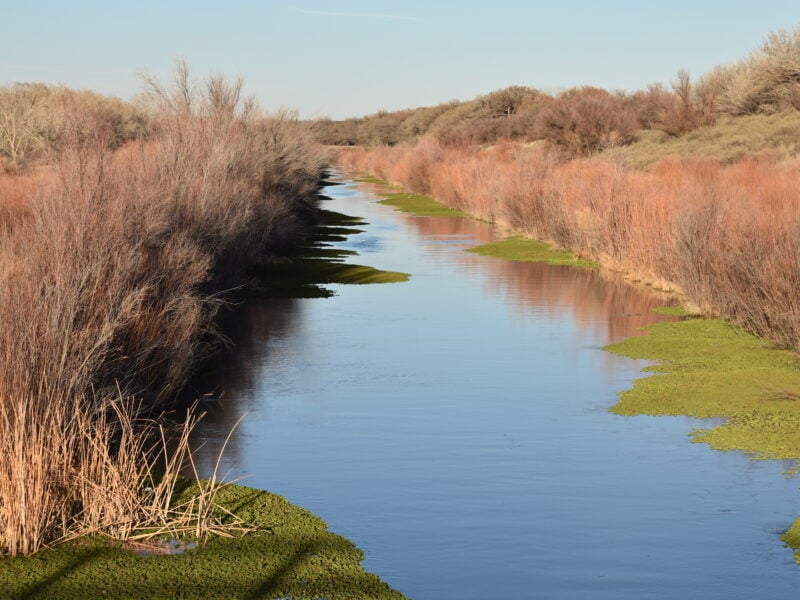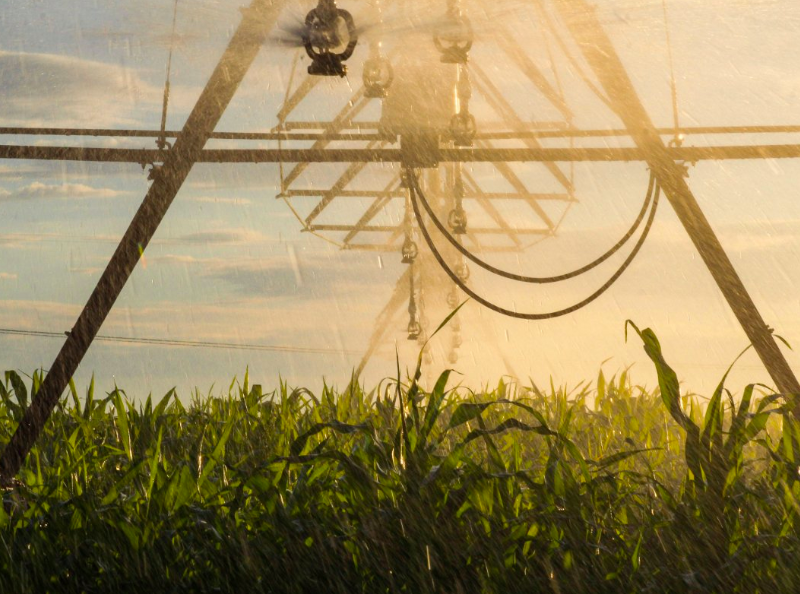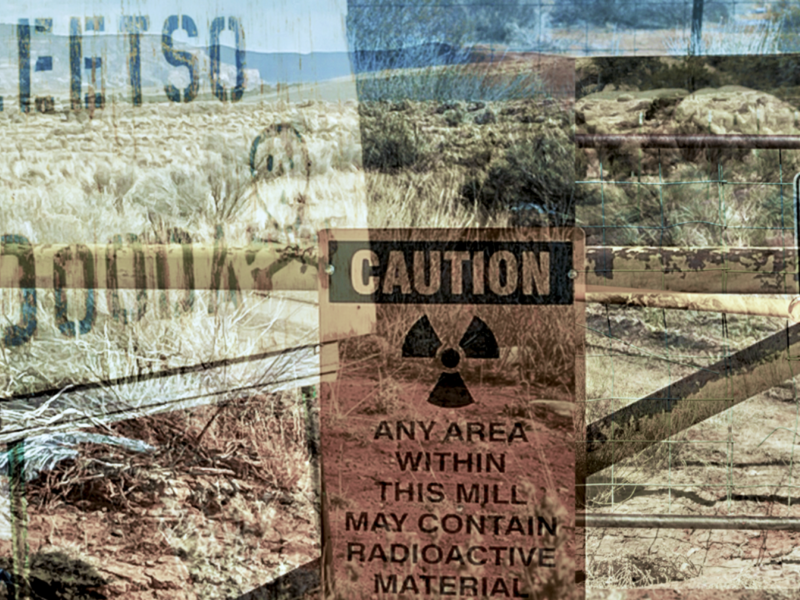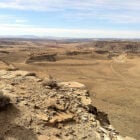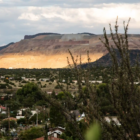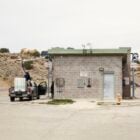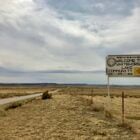There’s a tale of two cities unfolding in eastern New Mexico: Clovis and Portales both rely on a single source of potable water, the Ogallala Aquifer. That aquifer is finite and rapidly depleting. Five years ago, New Mexico Tech offered both communities aquifer mapping research to predict how long their reserves might last. That research guided Clovis to shutting off 51 irrigation wells and saving 4 billion gallons of water. Portales didn’t choose to use it.
Water
Indigenous feminism flows through the fight for water rights on the Rio Grande
|
Julia Bernal (Sandia, Taos and Yuchi-Creek Nations of Oklahoma) in Sandoval County in the Middle Rio Grande Valley. “It’s like this concept of landback. Once you get the land back, what are you going to do with it after? It’s the same thing. If we get the water back, what are we gonna do with it after?
Climate change
‘Like a demon that’s always behind us’, the Jackpile Mine toxic legacy continues
|
The Jackpile mine after groundcover was planted and sidewalls of the pit were contoured to prevent erosion. Image/National Institute of Environmental Health Sciences. In the village of Paguate as June Lorenzo’s grandmother knew it growing up, orchards and fields of wheat and corn carpeted nearby hillsides. Streams traversed a verdant valley where people hunted and grazed sheep near the small farming community in Laguna Pueblo. This was before a massive mine cratered the nearby land and altered the skyline.
At the Precipice: New Mexico's Changing Climate
How the rise of copper reveals clean energy’s dark side
|
This story is co-published by New Mexico In Depth and the Guardian US, as part of the series “America’s dirty divide.” Corky Stewart, a retired geologist, and his wife live in a rural subdivision in New Mexico’s Grant County, about a mile north of the sprawling Tyrone copper mine.
“We’ve been here three years and we’ve heard four blasts,” Stewart said of the mine, one of four on an expanse of land partitioned into dozens of four-acre lots. From his perspective, the blasts don’t seem unreasonable, given that a mining company owns the property and has the right to do what it wants.
But he didn’t know when he bought the property that the company would propose a new pit called the “Emma B” just a half-mile from the wells he and his wife depend on for drinking water. “If they were to somehow tap into our aquifer and drain our water supply, then our houses become valueless,” he said.
“We’re not making any effort to prevent the pit from being built,” he said. “All we’re really asking is for them to give us some commitment that they will fix whatever they do to our water supply.” But the mine refuses to give them this assurance, he said. Freeport-McMoRan did not respond to multiple requests for comment by New Mexico In Depth and The Guardian.
Water
Navajo-Gallup water delay spurs problem solving in arid Southwest
|
Early this year, five of Gallup, New Mexico’s 16 water wells stopped producing water, including two of its biggest. After a few days of maintenance, two worked. The other three were out of commission for more than a month. Had it happened in summer, the city might have asked residents to dramatically reduce use. “I’m not in crisis mode,” said Dennis Romero, Water and Sanitation Director for the City of Gallup, but “it could go to crisis mode very quickly.”
The shortage isn’t wholly surprising — 20 years ago, the city decided it could limp along on aging groundwater wells with dropping water levels until a new water project began delivering San Juan River water in late 2024.
As water reaches eastern Navajo communities, it brings possibilities and homecomings
|
For a while, Chee Smith Jr. thought he was going to have to send his father to die among strangers. His family lives at Whitehorse Lake, a Navajo chapter where, until a few years ago, roughly 550 of 700 residents had no running water in their homes, including Smith’s. As Smith’s father aged and his health worsened, it became harder and harder for him to live at home. “We had to haul water from the chapterhouse or the watering points every day for just basic things — for cooking, for laundry, for stuff like that, and also for our livestock,” Smith said. “It takes a big toll.
